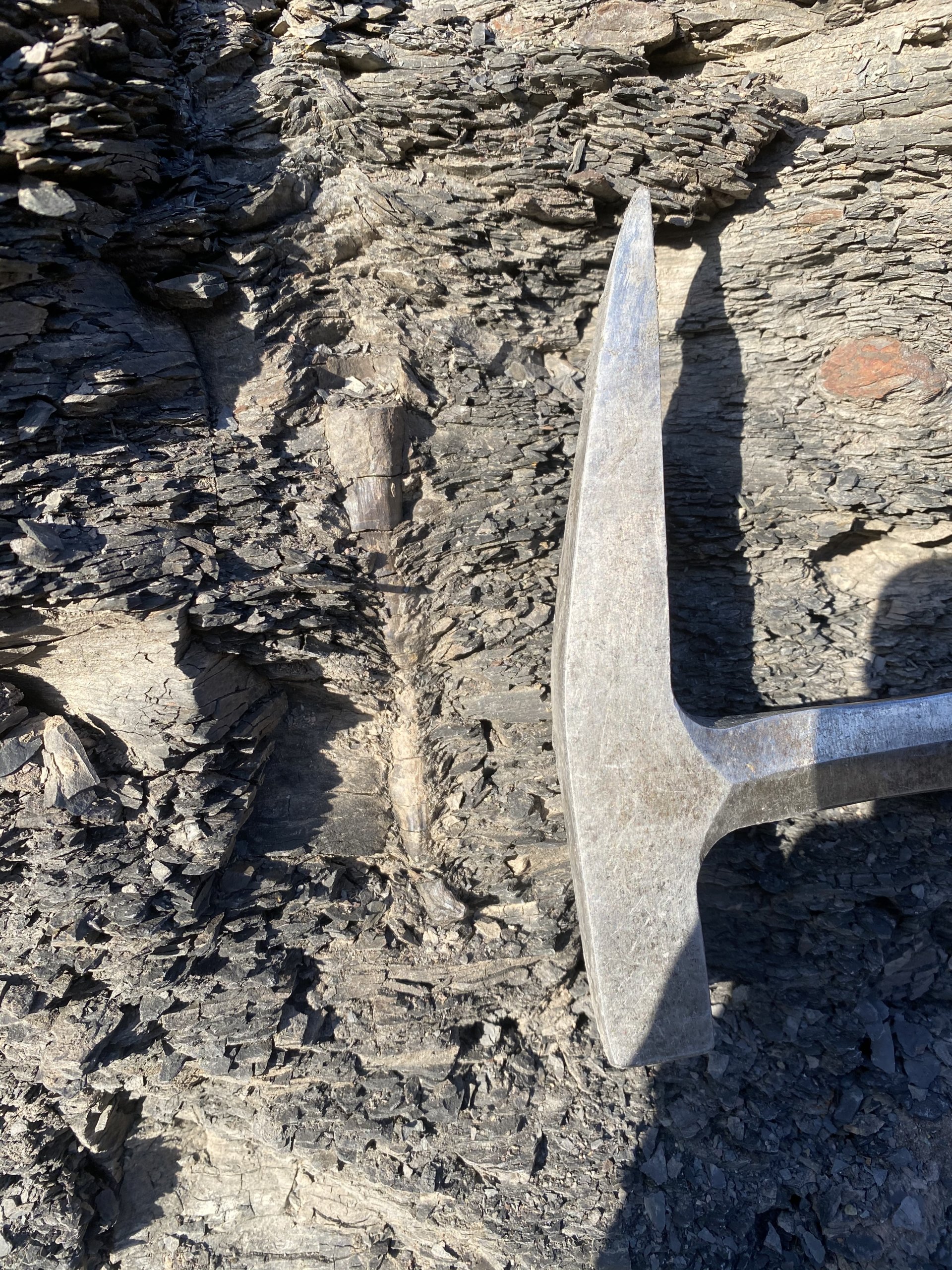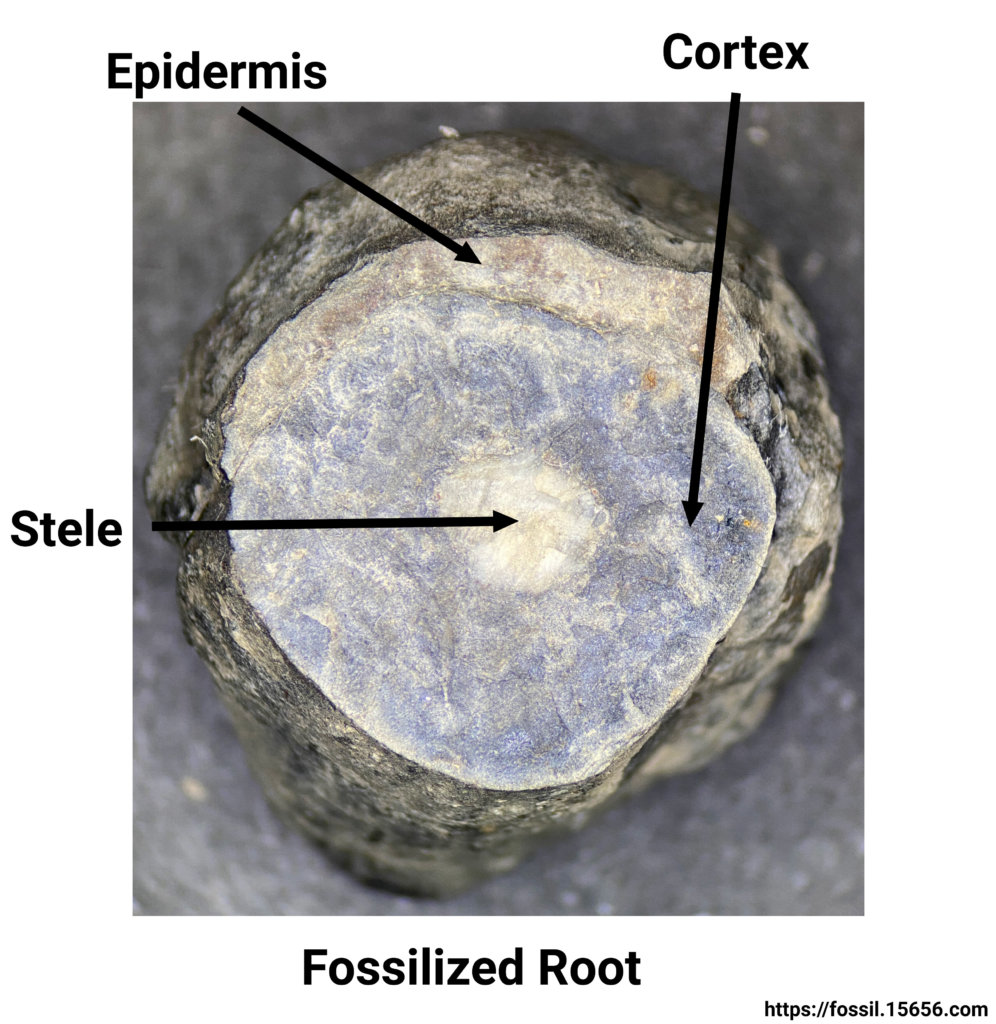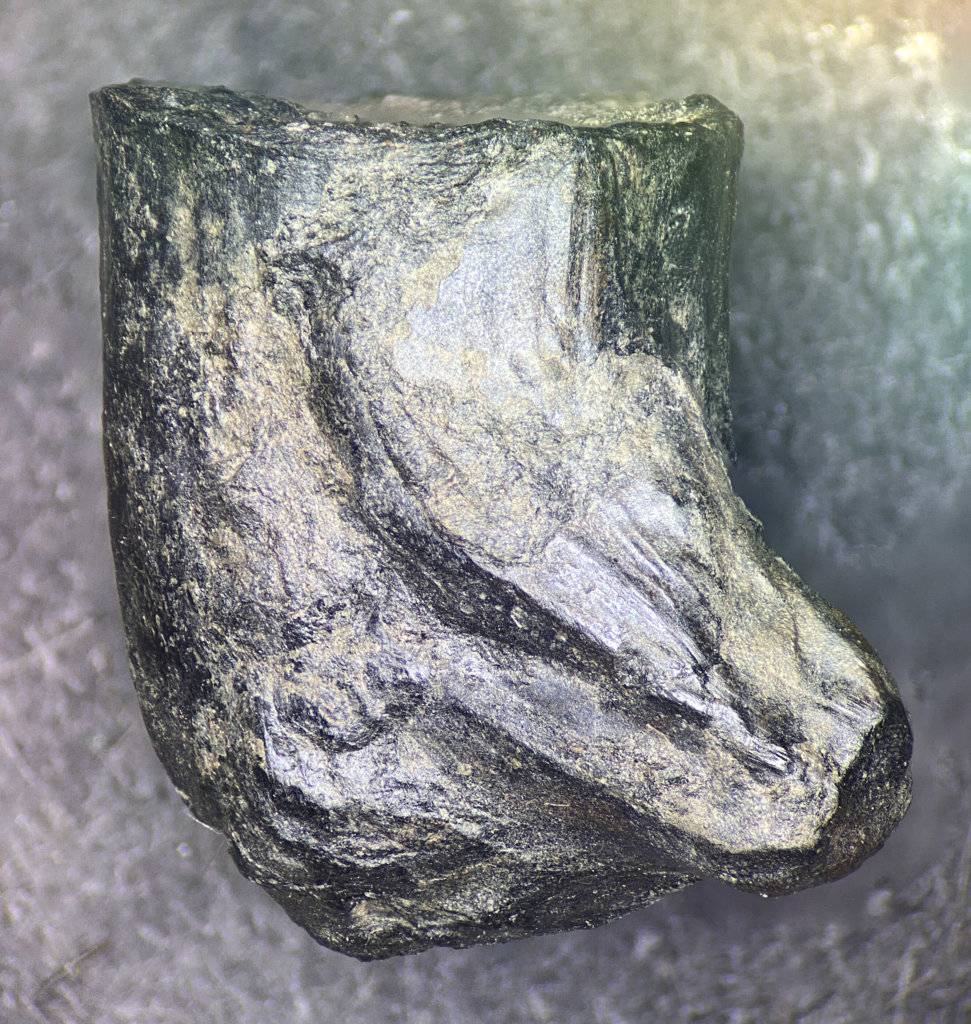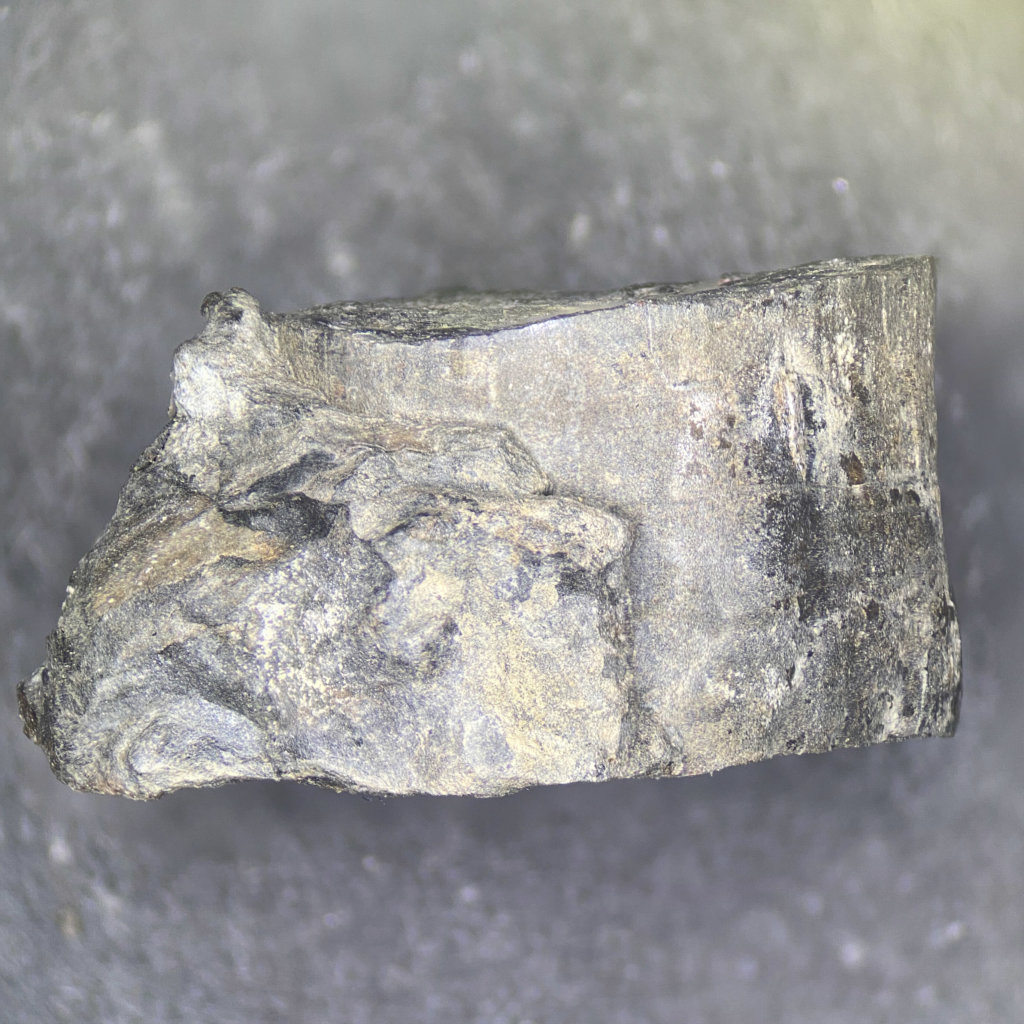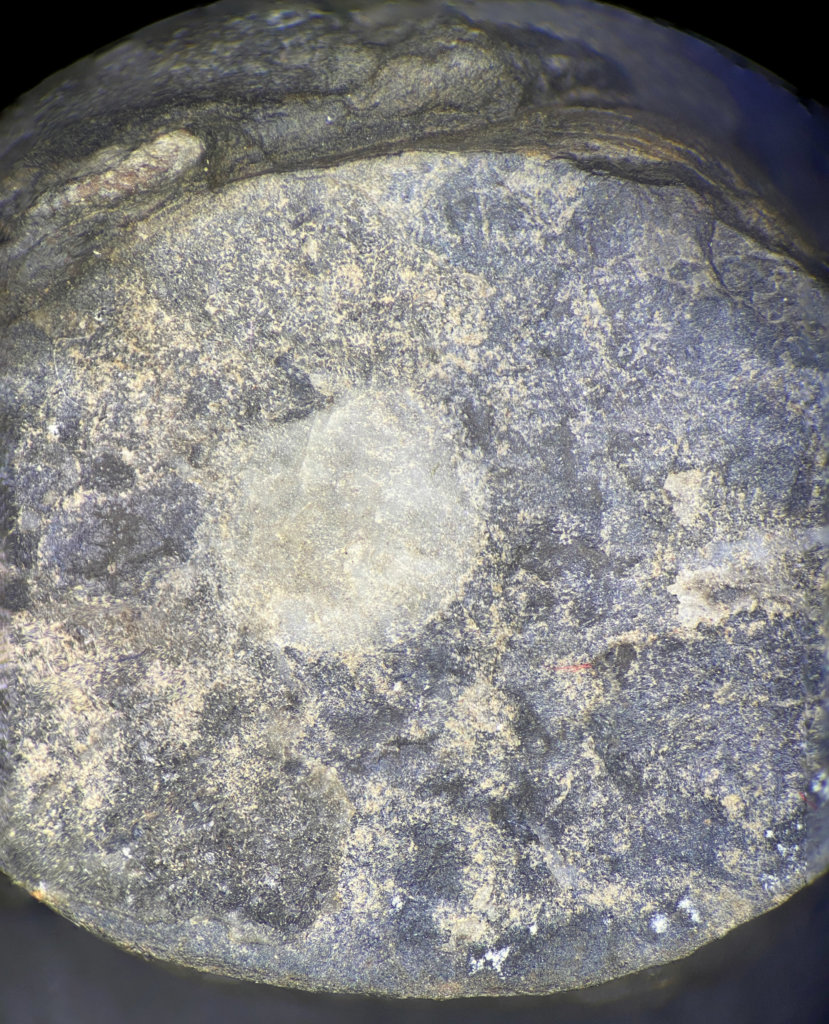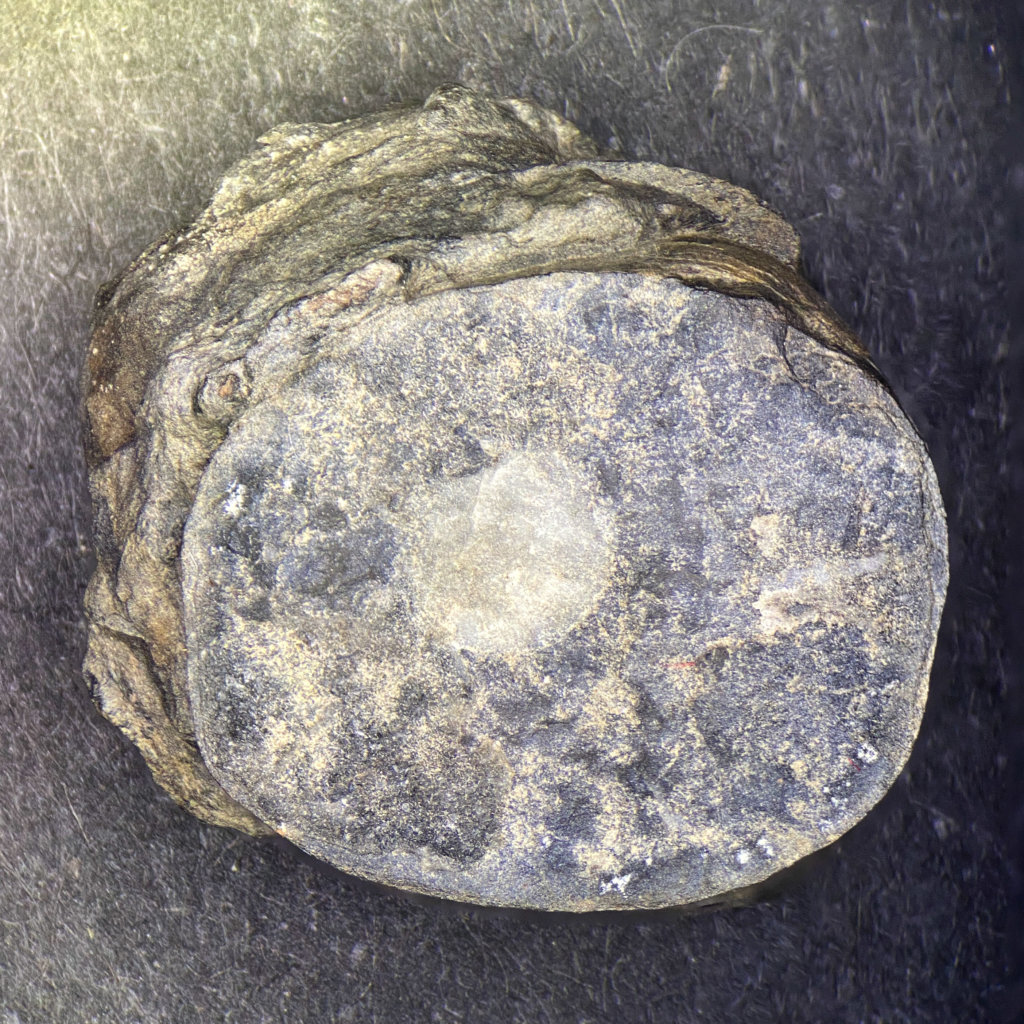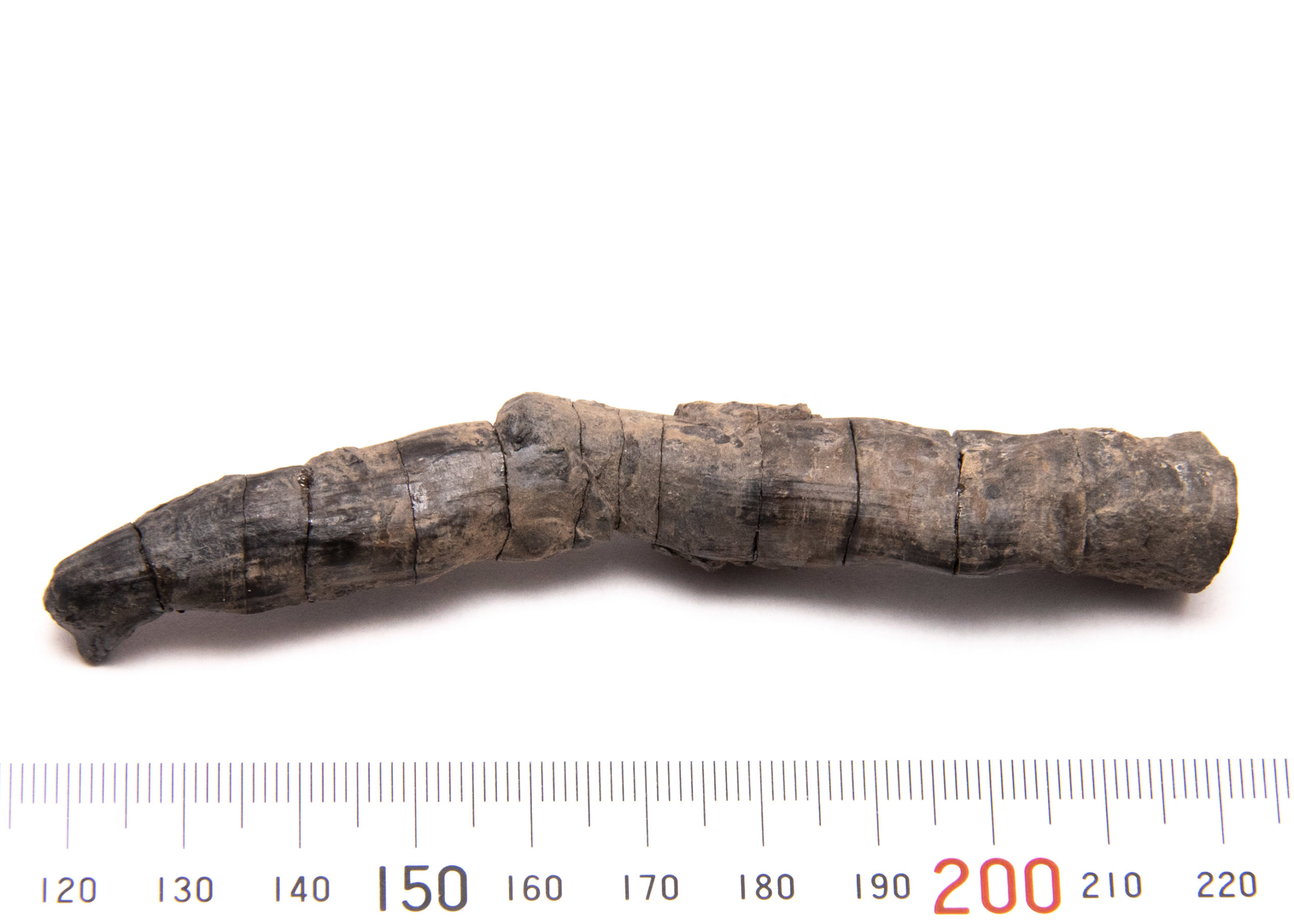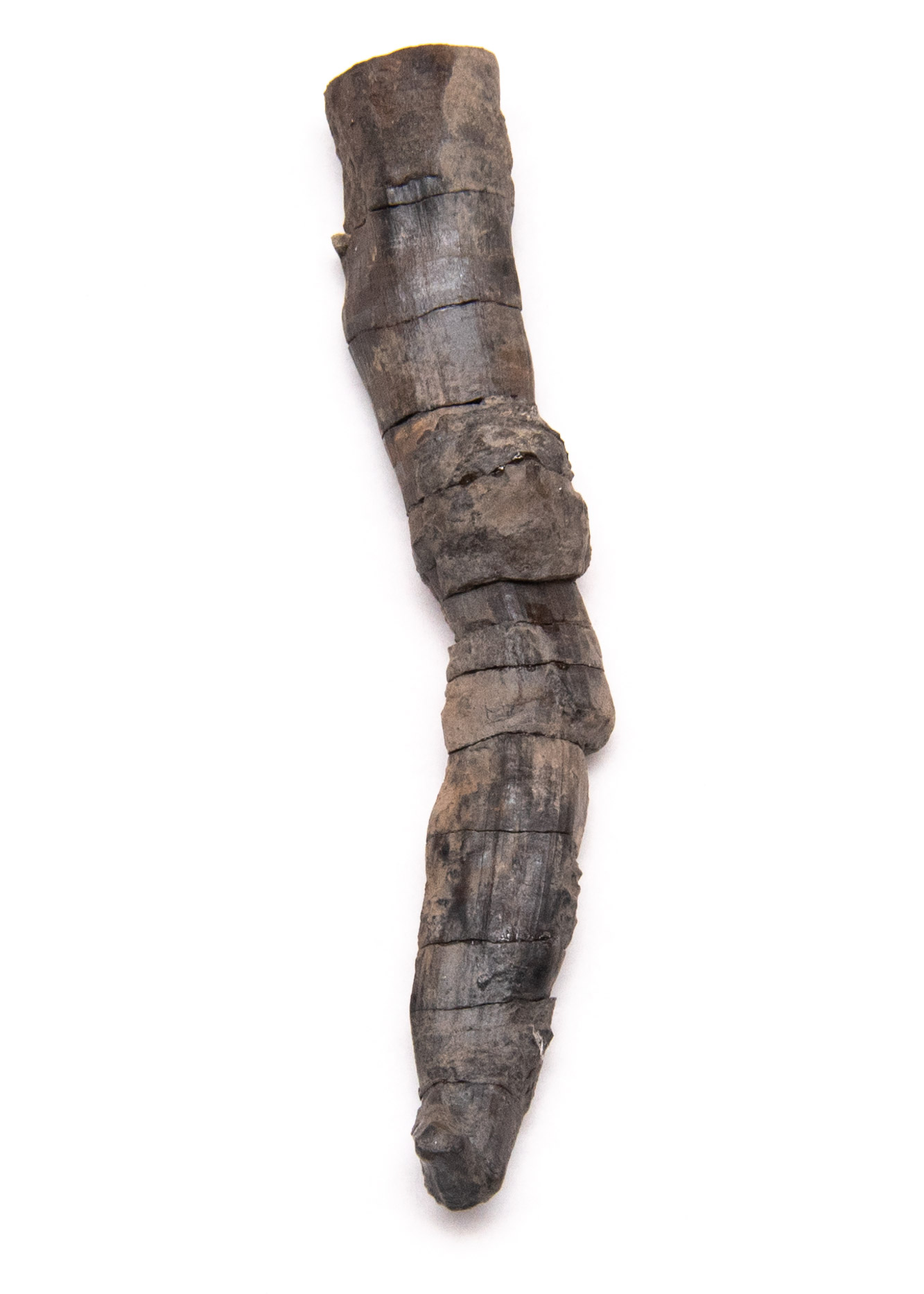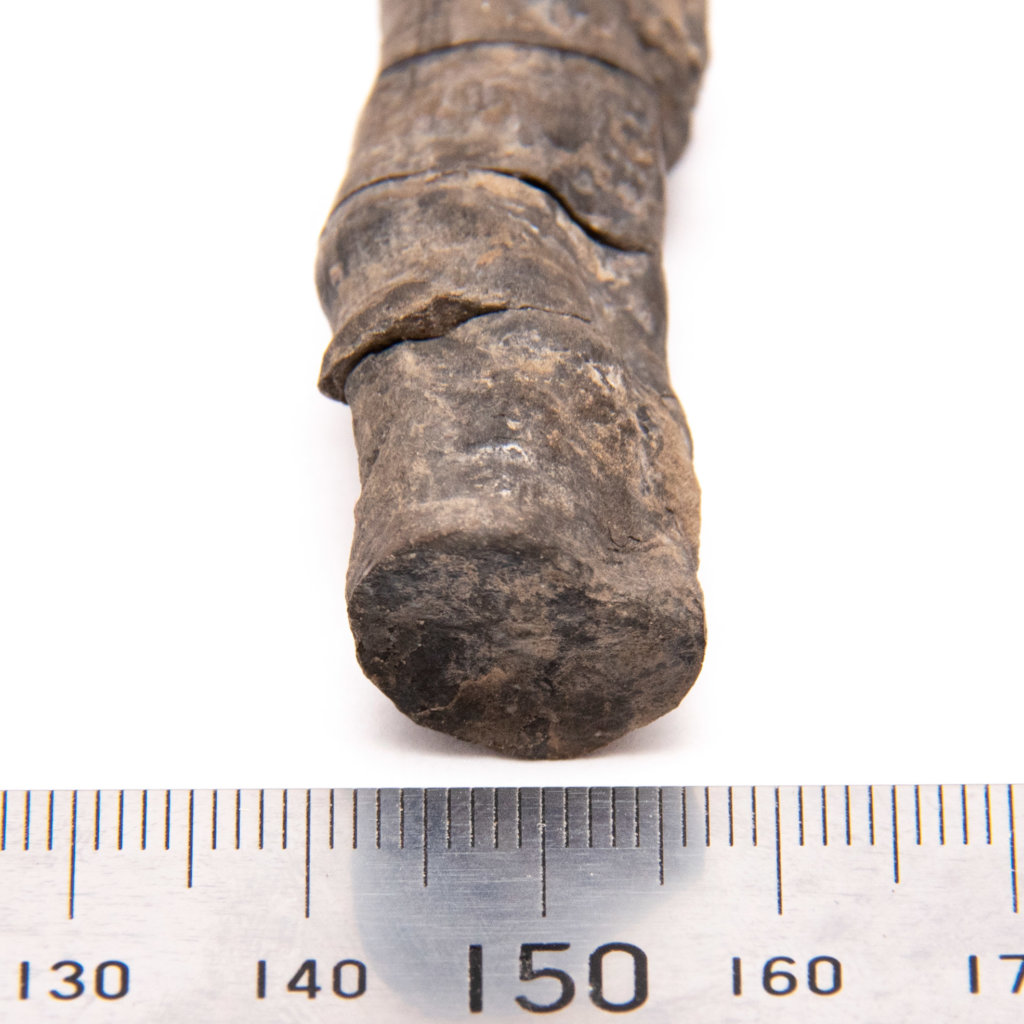Catalog Number: CG-0152
I have found very little fossilized woody material in the Late Carboniferous strata locally. It most certainly exists, I just haven’t been lucky enough to recover any. That changed yesterday with the recovery of a fossilized taproot. The specimen was found in-situ in shale immediately above the Pine Creek limestone.
It was discovered as an upright elongated shape with a tapering width, getting more narrow as it descended into the rock. It was segmented into thirteen separate pieces, likely caused by the natural fracturing of the shale it was in. The top segment was missing, but the epidermis was still in place, showing a back wall and side root. I am unable to identify any sort of genus or species for this specimen. It can be difficult enough to determine a plant genus from leaves. I believe identifying by roots may be more difficult.
The specimen is just over 10cm in length and 16mm at it’s widest point. It also appears to have a break in the middle that was healed before fossilization.
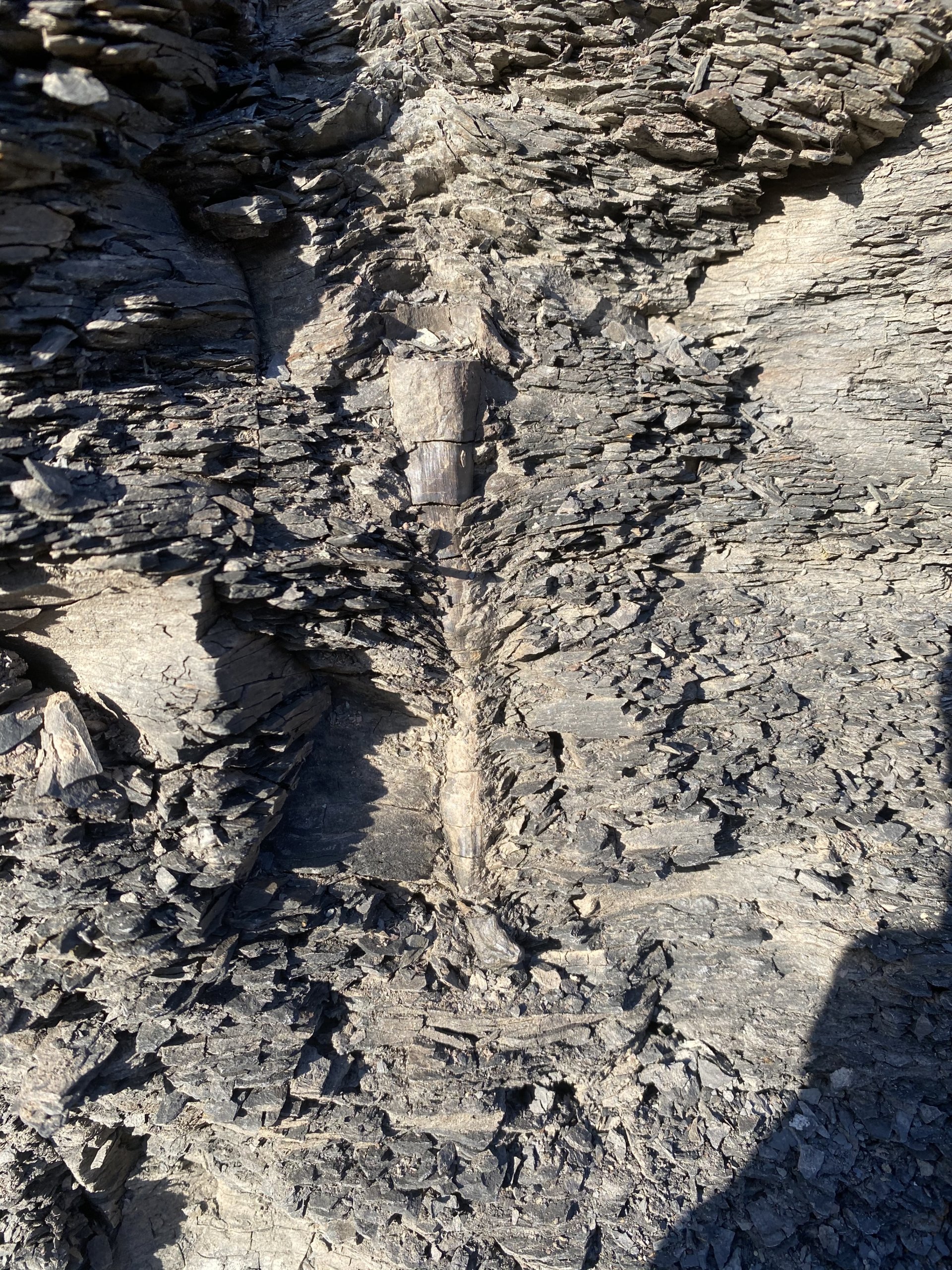
Examining in cross-section
In cross-section, the specimen has identifiable fossilized remains of root structures, the epidermis, cortex, and stele. The epidermis is the outer protective layer of roots. The cortex makes up the largest portion of the mass in the root. It is composed of thin-walled cells that help diffuse water from the outside to the root into the stele. It also can function for the storage of starch as a source of food. The stele is the core of a root or stem, containing layers that serve to transport water.
All of these structures in roots contain different types of cells. Some of the cells are thick-walled while others are thin-walled. Furthermore, there are a number of different cell shapes present depending on position and function. That would explain what appears to be three different forms of petrification/mineralization. The stele is preserved with white quartz or calcite mineral. The cortex is preserved as a darker material. The epidermis is a lighter color. All seem to have been formed with different combinations of minerals, dependent on each layer’s ability to resist or accept minerals after being buried in sediment.
Identification as a Taproot
The specimen is tentatively identified as a taproot due to its large size and straight-down appearance. The specimen starts out wide at the top in-site and became more narrow the further down it was. At the top, there is an apparent side root. Near the bottom, it appears rounded off but there is at least an off-shoot. It is very straight, however, not all taproots are straight. It was very straight before the break in the middle occurred. The epidermis is mostly missing from the front. Likewise, at least half of the epidermis layer is adhered to whatever rock fell that was previously covering the specimen.
However, there are many things to consider when identifying. Determining paleoclimate helps to narrow down what could have grown in this particular location at this particular time. The gastropod (snail) Bellerophon is found in about the same position in the stratum, so it can be said that there was water present. I recently learned (Gar Rothwell, personal communication) that there are two primary types of fossil plants that could have a root system like this. The first is cordaitaleans, which is an extinct order of woody seed-producing (gymnosperms) plants. They may eventually be confirmed as early conifers. Conifers are the second primary possibility, however, these preferred higher well-drained areas that did not often receive sediments to preserve fossils. Walchia is the default genus for fossil conifer remains that can not be identified (Rothwell et el. 1997).
The only way to perhaps secure an identification is to perform a thin section on the specimen. This is quite a process, which can be seen here. As of right now, I do not have plans to prepare one.
Why did this root become a fossil?
While it’s impossible to know exactly what happened to cause its preservation, one can make educated assumptions. The fossil was recovered not far from the limestone. Therefore, the area was recently covered by the sea (or bay rather) which was now retreating, that was responsible for creating the Pine Creek limestone. This limestone is laterally extensive and covered a very large area, extending from neighboring West Virginia and Ohio into western Pennsylvania. This is why the limestone stratum is not too thick, the waters did not stick around long. The prevailing theory is that climate warming melted global ice, causing a rise in sea levels that flooded water into the basin.
Perhaps the waters were nearly gone and a large flood buried a young Pennsylvanian period tree in sediment. These areas near a marine shoreline are comparable to marine shorelines today, with inlets, dunes, etc. Sediments can be laid rapidly and thick. The sediment could have completely cut off the oxygen. This would have preserved the root long enough to become lithified.
Additional Cross-Section Views
Each individual piece preserves at least cortex and stele portions. Some preserve epidermis. A majority of the epidermis layer seems to have eroded away or stuck to the surrounding matrix. I was fortunate to preserve some of it.
Final preperation
After photographing each piece, I started to attempt to piece it back together by matching sections. I added acetone to my jar of Paraloid B-72 and used it to attach the sections. Paraloid is great as I can reverse the process later with solvent if I so choose. The pieces went together without any problems. I finished putting it back together and photographed it with a metric scale.
References
- Busch, R.M. and Rollins, H.B., 1984, Correlation of Carboniferous strata using a hierarchy of transgressive–regressive units: Geology, v. 12, p. 471-474.
- Harper, J. A., 2016, Some geological considerations of the marine rocks of the Glenshaw Formation (Upper Pennsylvanian, Conemaugh Group), in Anthony, R., ed., Energy and environments: Geology in the “Nether World” of Indiana County, Pennsylvania. Guidebook, 81st Annual Field Conference of Pennsylvania Geologists, Indiana, PA, p. 47-62.
- Rothwell, G. W., Mapes G., Mapes R. H., 1997, Late Paleozoic conifers of North America: structure, diversity and occurrences, Review of Palaeobotany and Palynology 95 (1997) pp. 95-133
- Rothwell, G. W., 2021, Email communication.

